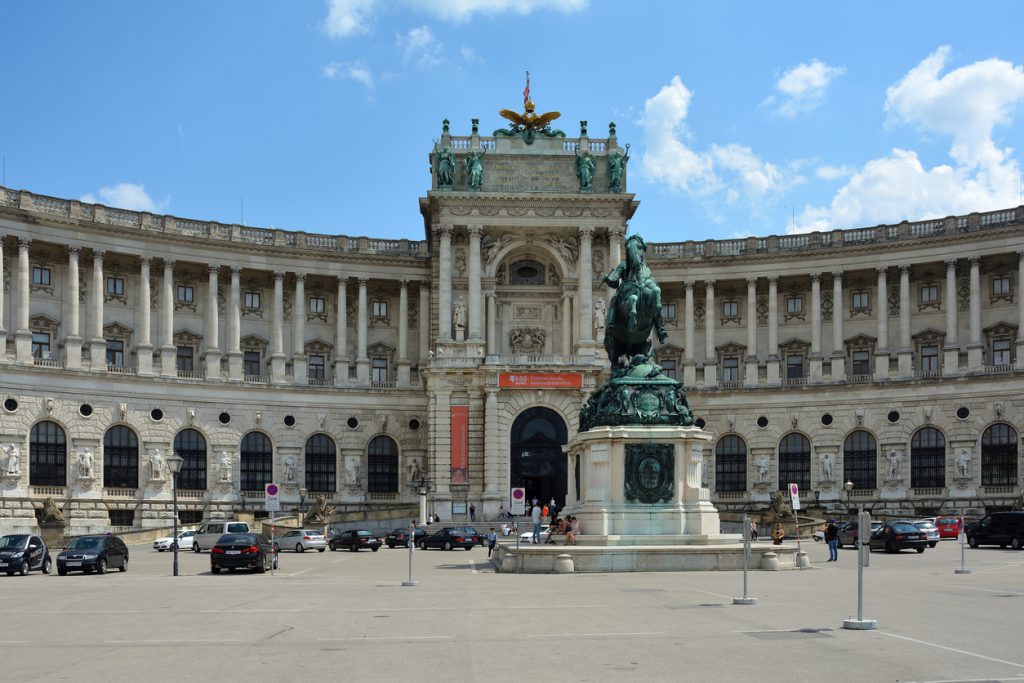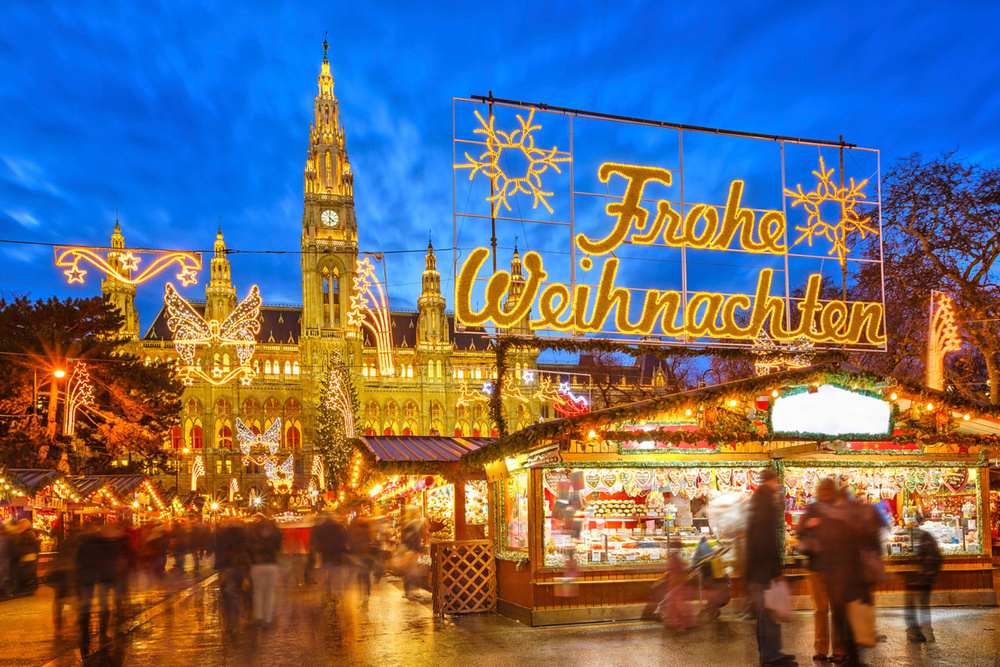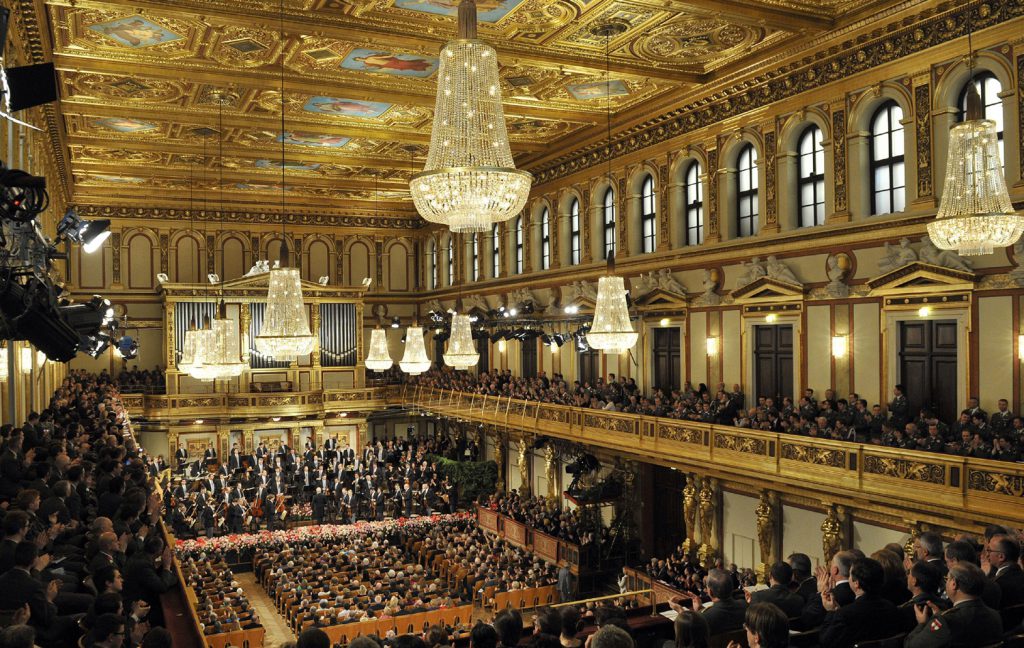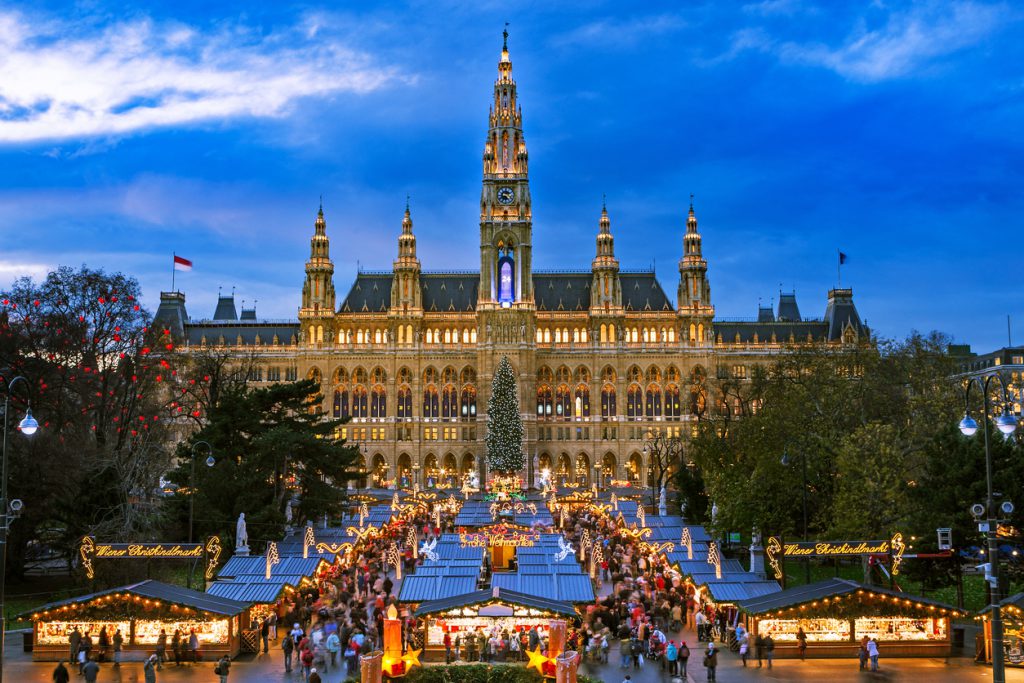Austria’s capital is one of the world’s most coveted destinations for a New Year’s Eve getaway. The many charms of the most important city of the former Austro-Hungarian Empire will set the bar high for the rest of 2019.
Vienna is a city of great beauty, notable among European capitals for its magnificent palaces and the outstanding architectural design of its city centre.
Despite the icy temperatures typical during the Christmas period, the city undergoes a total transformation, and the streets are taken over by locals and tourists alike in a never-ending celebration.
The festivities are concentrated around Vienna’s historic centre, where colourful decorations, lights and music bid farewell to the old year. These are just a few of the events you shouldn’t miss if you’re lucky enough to be there on 31 December.
The Imperial ball
The crème de la crème of Viennese society gathers in the Imperial Palace on the last day of the year for the world-famous Hofburg Silvesterball.
A solemn occasion, it begins with the ceremony of the changing of the guard at the palace gates and continues with the presentation of the guests according to the strictest protocol, before the gala dinner and opera concert.

However, it’s perhaps best known for the Midnight Ball, at which Johann Strauss’s best-known waltz, The Blue Danube is always performed. It’s the most-photographed moment of the evening, and without doubt, one of the most famous images of New Year’s Eve.
Although it might appear to be an exclusive occasion, reserved only for those who can boast an aristocratic title, a huge fortune or blue blood, for many years now, it has been open to the public.
At the same time, gaining access to this fairytale event, involves a certain amount of expense. If you only want to attend the ball, a ticket will cost €165, while a seat at the gala dinner can cost as much as €750.
As well as the ticket price, you’ll need to calculate the cost of formal attire – black tie for men – and also call upon some kind of divine aid to help you dance a respectable waltz. Failing this, you’ll also have to pay for a few hours of dance lessons.
Then again, after paying for your flight plus a significant amount for a centrally located hotel, your budget may already be maxed out. Fortunately, the city council offers a more economical alternative: the Silvestergala in the City Hall.
The programme is similar, although admittedly with more of a B-list feel. Prices range between 140 and 400 euros.
Vienna’s New Year’s Trail
Although we’ve started with some options that can really put a strain on your budget, the classic outing during New Year’s Eve in Vienna is absolutely free. It’s the Silvesterpfad, the city’s New Year’s Trail.
This walking route takes you through the main streets of Vienna’s city centre, which are decorated for the occasion every year.

New Year’s celebrations are centred on Vienna’s first district, where a festive programme fills the streets with 12 hours of shows, live performances, pop music and rock, DJs, waltzes and folk dancing.
The streets are also lined with food and drink stalls, where you can sample typical local, seasonal delicacies.
Seeing in the New Year
The climax of this tour of the streets of Vienna is the moment when bells ring out for the New Year. There are several ways to celebrate this magical moment.
The first is to head for Stephansplatz¸ next to Saint Stephen’s Cathedral. Here, crowds gather at the outdoor stage for concerts, which all come to a halt before midnight, to see in the New Year with the chimes of Pummerin, the local nickname for the cathedral’s bell.

A hugely popular option for locals and tourists alike is the City Hall square, the Rathausplatz. As well as the enormous concert stage and street food stalls, at midnight the sky is lit up by a breathtaking fireworks display.
The highlight, as the fireworks explode overhead, is the moment when the omnipresent Blue Danube Waltz rings out – tradition dictates that the crowd waltzes along in the streets.
Another highly recommended location, with a wonderful atmosphere, is the Wiener Prater, Vienna’s city park, where you can watch the fireworks from above on the Riesenrad, the venerable giant Ferris wheel.
The New Year’s concert
It’s the culmination of Vienna’s festive season, an event that has transcended national borders and become obligatory viewing for those recovering from their New Year’s Eve celebrations.
The Vienna Philharmonic takes to the stage to perform in one of the most famous classical concerts in the world, in the Golden Hall of the Musikverein.
The concert has been held every year since 1941, and is broadcast live by television stations all over the world, on the morning of 1 January.

Recent figures suggest it is televised by over 100 channels, with audience numbers in the tens of millions.
The high point of the concert comes when Strauss’s Radetzky March begins to play, and the audience accompanies the orchestra, clapping along in time to the music.
A warning: tickets go on sale a year before the performance. Due to the limited capacity, a draw is held in January and February for tickets for the following year. Depending on your location in the hall, enjoying one of the year’s most magical moments could cost between €35 and €1,090 per person.
So, if someday you can count yourself amongst the lucky few, be sure to make the most of it…






